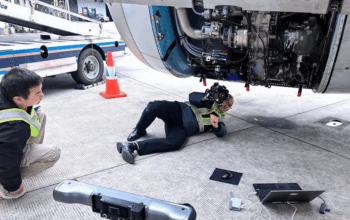Shift left is an approach to manufacturing that goes hand in hand with digital transformation. Making the right decisions is not enough in the competitive business environment. The most successful company is the one that makes the right decision fastest. That’s where the shift left approach can help. In this blog, we take a deeper look at how organisations can plan and implement a shift left strategy that’s right for them.
Every situation is different, but with the right planning and controls in place, you can build a successful shift left strategy for your own unique situation. We’ve talked about how a shift left strategy can improve your sustainability and efficiency. Now we take a closer look at how to put it all together with a shift left strategy.
How to create a shift left strategy
Shift left is an approach to manufacturing that goes hand in hand with digital transformation. Making the right decisions is not enough in the competitive business environment. The most successful company is the one that makes the right decision fastest. That’s where the shift left approach can help. In this blog, we take a deeper look at how organisations can plan and implement a shift left strategy that’s right for them.
Every situation is different, but with the right planning and controls in place, you can build a successful shift left strategy for your own unique situation. We’ve talked about how a shift left strategy can improve your sustainability and efficiency. Now we take a closer look at how to put it all together with a shift left strategy.
Phase 1. Analyse, set your goals and map the process
The first step of any business strategy is to stand back and make a full appraisal of your current situation. That means taking a close look at your resources, your core competencies and your current operations. Be clear about your strengths and weaknesses. From here you can set your goals. Knowing what you want to achieve and keeping those targets in mind will help you track and
monitor the change. Be transparent about it and make sure everyone knows what success looks like. Creating clear, universally understood goals is key to ensuring the organisation is aligned and
moving in the right direction. With a detailed understanding of your present situation and your ideal end result, the goals you set will serve as your compass. At this stage in the process, you need to be plotting the path from where you are now to where you want to be. What are the steps we need to take to arrive at the destination? That will typically involve: identifying bottlenecks in your operation and developing strategies to overcome them, aligning resources and creating a detailed map of the transition.
Phase 2. Fluid cross-functional collaboration
It’s vital to involve all the relevant people from the start of the project. Shift left is all about better communications and faster decisionmaking, so stakeholder engagement and seamless data sharing is the foundation. A manufacturing company is composed of people with a range of skills. By forming teams with a mix of roles and competencies and bridging gaps that exist between departments with collaboration tools, you can achieve a comprehensive view of your processes. This allows for more efficient problem-solving.
“the driving force of efficiency throughout your organisation”
Cross-functional teams are the cornerstone of the shift left strategy. They work together to identify and solve problems as and when they occur. They can also seek out and find opportunities for improvement. Achieving a high level of stakeholder buy-in and employee engagement from the shop floor to the boardroom will set the right example for everyone else to follow and this collective, group intelligence is what will take your shift left strategy from the drawing board to the driving force of efficiency throughout your organisation.

Phase 3. Implementing technology
A key part of the shift left strategy in manufacturing is investing in the right technology. Technologies like automation, artificial intelligence, machine learning and predictive analytics can speed up the process and help find a rapid resolution when you need it.
“a solution that can adapt to the needs of your organisation”
Remember, it’s not just about having the latest technology, but about choosing the right fit for your needs and goals. By this stage, you should already have a clear idea of what your requirements will be to meet the goals you outlined at the start but remember that as your organisation grows you’ll need a solution that can adapt. Much of Hexagon’s technology is scalable and supplier agnostic so you can add new elements to your existing stack without writing off any previous investment.
Phase 4. Continuous improvement and team training
To succeed with a shift left strategy in the long term, you need to continuously search for ways to improve. Digital skills, the ability to work with data, and the ability to implement the recommendations of technology are essential. A programme of training and development will make sure you’ve got the right skills within your organisation when you need them. Continuous improvement is about always trying to do things better. The insight generated by data and the recommendations of AI will help you to create circular feedback loops for continuous improvement empowering your teams to streamline processes, cut waste, increase efficiency and make the best product possible.
You need to go beyond finding and fixing problems, you need to understand why they happen and how to prevent them. Training equips your staff with the knowledge and skills to spot and address issues early. It’s not just about how to use processes and technology. It’s also about understanding the shift-left strategy and how to adapt to changes in the business environment and the markets you serve.
Phase 5. Monitor and adjust
At this point, you’ve got the project up and running. The technology is in place and your people are trained on how to get the best from it. You must assess the strategy and your company performance regularly with the right KPIs in place. A shift left strategy is not a static project, it’s dynamic and constantly changing. That’s why you need to monitor, learn and adapt. It’s not just about collecting data. You need to look into the numbers to understand the reasons behind your results. Use these insights to see what’s working and what needs adjustment










